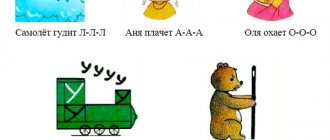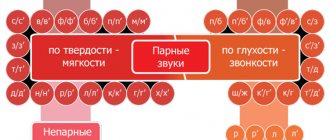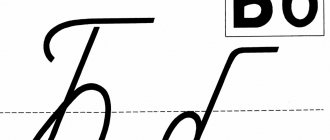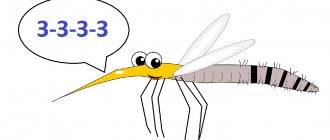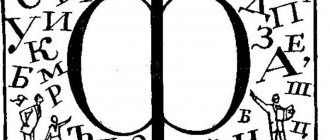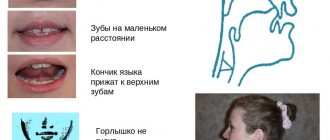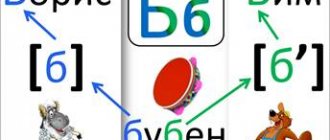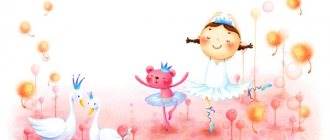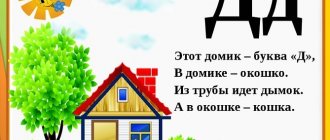Continue the sentence
There lives an Evil Green Steamboat in the rivers of Africa! No matter who swims towards him, he will swallow everyone... (crocodile).
Who will color our album? Well, of course... (pencil).
The kitten didn't want to wash. He ran away from ... (trough).
“I hit the green stuff!” - Crying bitterly... (crocodile).
The goldfinch sings all day long in a cage on the window. He is in his third year, and he is afraid of... (cats).
I’m growing to everyone’s surprise, tall, slender, beautiful. I hide golden cobs in light gloves. I may not be sweeter than a watermelon, but more satisfying. I... (corn).
What's that creak, what's that crunch? What kind of bush is this? How can I be without crunch, If I... (cabbage).
Round, crumbly, white, it came to the table from the fields. Salt it a little. After all, the truth is delicious... (potatoes)?
I'm rushing forward like a bullet, only the ice creaks, and the lights flash! Who is carrying me?... (Skates.)
This animal lives only at home. Everyone is familiar with this beast. He has a mustache like knitting needles. He sings a purring song, Only the mouse is afraid of him... Did you guess it? It's a cat).
At night, Vanyatka inside me falls asleep so sweetly that I don’t want to get up. What kind of thing am I? … (Bed)
Tale about the letter K
How to cook compote
In one yard there lived a cat, a goat, a chicken, a cow and a rabbit. One day a cat came out into the yard and shouted:
Listen up everyone! I read in an old book how to cook compote! - Well, how to cook it? - Everyone bring everything delicious, the rest is up to me.
The whole company went to look for the most delicious things, and meanwhile the cat lit a fire and hung a cauldron of water over it. The goat came first and brought a cabbage stalk. Then the hen came and brought five grains of corn. The cow brought watermelon rinds, the rabbit brought clover, and the cat himself took a piece of sausage out of his pocket. When the water boiled, the cat threw the stalk, peels, corn, clover and sausage into the cauldron and closed the lid.
After a while he rang the bell:
Ready! Eat for your health.
Friends tried it, they spit:
It's called compote! Eat it yourself! - Why did it turn out so tasteless? — the cat thought gloomily.
If the child does not pronounce the sounds K, G, X, Y and others
Recently, many children, even at seven years old, have observed problems with the pronunciation of early sounds: [k], [g], [x], [th]. Also, many first-graders often soften consonants or voice deaf sounds and deafen voiced consonants. What is the reason and how to fix it, we will figure it out in this article.
| Correction of pronunciation disorders of back-lingual sounds |
| Sound setting [th] |
| Elimination of voicing and deafening defects |
Causes of violation of back-lingual and middle-lingual sounds
The sounds [k], [g], [x] are back-lingual in accordance with the place of formation. In their production, the main role is played by the back of the tongue, which tenses and presses against the palate. [Y] – middle language sound according to the place of formation. During its production, the middle third of the tongue tenses and rises towards the palate. Thus, language is very important when pronouncing these sounds.
One of the reasons for such a massive violation of the simplest sounds [k], [g], [x], [th] is the sluggishness of the tongue muscles. A generation of children is growing up, raised on artificial feeding and suckling at their mother’s breast for a short time. Breastfeeding is not only a natural process and a healthy diet, but also the formation of many mental functions. Among them are sexual components according to Freud and the development of the organs of the articulatory apparatus. When suckling at the breast, the baby tenses his barely formed muscles of the lips and tongue. The baby has to “obtain” milk on his own. With artificial feeding, less effort is applied. The nipple is less firm than the breast. Life becomes simpler, but this has a negative impact on strengthening the muscles of the tongue.
In addition, many newborns are now fed soft foods that have been softened in a blender. This is not good, because when chewing even small boiled potatoes, the muscles of the tongue are also trained. The child only swallows soft food; the tongue remains idle.
With normal development, the sounds [k], [g], [x], [th] should appear by the age of one year. Imagine how advanced the speech process is if by the age of seven they are gone. This means that in kindergarten the baby did not develop his tongue muscles. They didn’t play with him, clicking like a horse, babbling like a turkey, they didn’t crow with him like a rooster. A child learns to pronounce many sounds by imitating an adult.
Another cause of impaired pronunciation of back tongues is dysarthria, rhinolalia, and functional dyslalia.
Causes of voicing defects and deafening of sounds
These also include replacing hard consonants with soft ones. A voicing defect is when a child pronounces [b] instead of [p], [d] instead of [t], [k] is replaced by [g], [s] by [z]. Deafening defects are, on the contrary, the replacement of voiced consonants with voiceless ones. “Tom” instead of house, “kalka” instead of jackdaw, etc.
The cause of deafening and voicing of sounds is phonetic-phonemic speech disorder, dysarthria, open nasality, partial voice disorder, mild hearing loss. It is especially common in cases of phonemic hearing impairment. The cause of the latter disorder is birth injuries, infections during pregnancy, and brain injuries after the birth of a child. Certain areas of the brain are responsible for phonemic hearing, damage to which leads to these problems.
Correction of pronunciation disorders of back-lingual sounds
Violation of the pronunciation of sounds [k], [k'] is called kappacism, sounds [g], [g'] - gammatism, sounds [x], [x'] - hitism. If the above sounds are violated, you need to work on strengthening the muscles of the tongue. If the tongue is hypotonic, it is recommended to chew more from early childhood. For training, you can chew on a latex pacifier. Eat solid foods. Do exercises such as clicking - “horse”, “mountain” - arching the tongue, “painter” - raising the tongue to the “ceiling”, “woodpecker” - tapping the tip of the tongue at the upper teeth. The role of articulatory gymnastics is very important when producing any sounds.
When producing the sounds [k], [g], [x], the lips are open, the tip of the tongue is moved away from the teeth, the back of it is raised and pressed against the palate. When pronouncing [g], the work of the vocal cords is added; when producing [x], the back third of the tongue does not close with the palate, its lateral edges are pressed against the upper teeth.
When producing the sound [k], several methods are used:
|
The soft version of the sound [k] is made by imitation.
With gammatism, production is carried out through the sound [d]. The child pronounces the combinations: yes, yes, yes, the tip of the tongue is moved towards the throat with a spatula (you can use a finger or a spoon). Thus, the tongue moves away and produces the syllables: yes-gya-ga. The sound [g'] can also be placed by imitation.
The sound [x] is placed from the sound [s'] by the same pushing of the tongue back. The child says: sya-sya-sya, it turns out sya-hya-ha. Another way to do this is the “warm your palms” exercise. When exhaling air, the sound [x] is involuntarily produced. Soft [x'] - by imitation.
Summary of a speech therapy lesson on the topic: Sounds [k][k], letter “K”
Summary of a group speech therapy lesson. 2nd grade.
Topic: Sounds [k], [k`], letter K.
Goal: correctly and clearly pronounce the sounds k, k` in syllables, words and sentences.
Tasks:
Educational:
· Strengthen the skills of distinguishing and clearly pronunciating the sounds k, k` in syllables, words and sentences;
· Develop skills in forming singular and plural nouns;
· Strengthen the ability to coordinate nouns with adjectives in gender and number.
Educational:
· Develop articulatory motor skills;
· Correction and development of fine motor skills of the hands by performing specially selected exercises (imitation of playing snowballs and tracing along lines);
· Promote the development and correction of attention, memory, thinking.
Educational:
· Develop self-control over speech, the ability to listen attentively to the speech of a speech therapist.
· Promote a caring attitude towards school supplies.
Equipment: presentation, task cards, subject pictures, ball, stickers, mirrors.
Progress of the lesson.
1. Organizational moment.
- The one who names a word consisting of 3 syllables will sit down.
2. Report the topic of the lesson.
- Today we will get acquainted with sounds and letters, guess the riddle and you will find out what we are talking about.
He doesn't sleep at all at night,
Keeps the house safe from mice,
Drinks milk from a bowl
Well, of course it’s ... (cat)
— Today a kitten named Kitty came to visit us for class.
— Divide the word kitten into syllables
- what is the 1st syllable? (ko), first and last sound? (k, j).
3. Characteristics of the sounds [k], [k`] according to articulatory and acoustic characteristics.
- Take a mirror and pronounce the sound [k].
— How do you pronounce the sound [k] (put the tongue behind the lower teeth, move it slightly back, the back of the tongue bends, then exhale the air sharply).
— How does the air flow occur? (free or encounters an obstacle).
- Let’s use our palms to check whether our voice is sleeping or singing? (sleeping).
Conclusion: When the consonant sound [k] is pronounced, the air stream encounters an obstacle.
- Name the 1st and 2nd sounds in the word kitten (k and o), o-vowel of the 1st row
— Guys, if after the consonants there are vowels of the 1st row, then our consonants are hard.
- Bend your fingers and repeat after me, what sound is [k]?
- The sound [k] is consonant, deaf, hard (the speech therapist speaks for the 1st time, together for the 2nd time, and the students alone for the 3rd time).
— We denote the hard consonant sound [k] with a blue circle.
- Now name the first syllable in the word Kiti (ki)
- first sound (k), second (i)
- And - what row is the vowel? (2 rows).
- If after a consonant there is a vowel of the 2nd row, then the consonant will be soft. Those. in the syllable ke the sound [k`] is soft.
-So the sound [k] is consonant, deaf, soft (the speech therapist speaks for the 1st time, together for the 2nd time, and the students alone for the 3rd time).
— We denote the soft consonant sound [k`] with a green circle.
4. Development of phonemic awareness.
-Let's play the game "Catch the Sound." I will pronounce sounds, syllables and words, if you hear the sound [k], then clap your hands.
-K, m, k, ko, ly, ta, ia, stake, garden, cat, dream.
- And now we catch the soft sound [k]:
- K, p, z, cinema, k, sa, mu, ki, k
- Well done boys.
-We hear and speak sounds, but we write letters. To read or write the names of objects, we need to become familiar with the letter. We denote the sounds k and k by the letter K.
— Now I’ll read a poem about the letter K.
Look at the letter K:
There is a leg and there is a hand.
Kostya shouted to the cat: “Shoo!”
It's all in K, baby.
- Let's raise our hands and write the letter K in the air with our fingers. And now with our eyes.
- Find objects in the class whose names contain the sounds k-k`.
5. Reading syllables.
ko kya
ka kyo
ky kyu
ku ki
- We read the syllables of the 1st row, in all these syllables what is the sound? (hard), why? (after k - there are vowels of the 1st row)
- What circle will we use? (blue)
- We read the syllables of the 2nd row, in all these syllables what is the sound? (soft), why? (after k- there are vowels of the 2nd row)
- What circle will we use? (green)
— Recording syllables in pairs under dictation.
- What syllables were written in the 1st column, what vowels come after k (vowels of the 1st row), i.e. We will underline the consonant letter k with a blue circle.
- What syllables were written in the 2nd column, what vowels come after k (vowels of the 2nd row), i.e. We will underline the consonant letter k with a green circle.
6. Pronunciation of sounds k - k` in words.
— Our kitten Kitty hid the pictures around the classroom.
- What is this? (card, balls, textbook, suit, pencils, skittles).
— Name the picture, he’s my only one (suit, textbook)
- She is my only one (card)
- They are mine (pencils, balls, skittles)
- Find a word that has one syllable (no)
- Two syllables (suit, skittles)
— Three syllables (balls, card, textbook,)
Reading these words on a card (one at a time) syllable by syllable, eyes closed, repeated again, write from memory in the first column with a small letter without commas.
- How the sound k sounds in these words (firmly), we underline with a blue pencil.
- Name a word in which the sound k is at the beginning of the word, what sound?
- Name a word that has 2 syllables and 6 sounds
— Guys, how to handle school supplies. (you can’t tear, write, or dirty textbooks; keep pens and pencils in a pencil case, don’t break them)
— Also, toys must be handled with care (you cannot tear, break, throw, get dirty and must be stored in special drawers and shelves).
7. Physical exercise
Game "One - Many".
Toy - toys
Machine - cars
Road - roads
Cube – cubes
- Which sound sounded in the words I studied, and which in your words?
Light bulbs - light bulb
bears - bear
rulers – ruler
textbooks - textbook
- Which sound sounded in the words I studied, and which in your words?
8.Look at the board and read the words, which vowels are missing
Slippery slide
Cool sank.
Beautiful roads.
- We need to make friends between the words of the 1st and 2nd columns.
- Write this phrase in your notebook.
— In which word does the sound k sound hard (underline hard k-blue, soft k- with green pencil).
9. Summary of the lesson and assessment of the child’s activities.
- Our lesson is over. What sounds did we learn to pronounce correctly today? What letter do we use on the letter? Well done! SLIDE
·
Activity: Print the letter K for preschoolers
Examine the letter K. Sew the letter K in the air and once in the notebook, carefully in the cells with a simple pencil or ballpoint pen.
In cases where the child is asked to write a whole line of a letter, syllable or word, the adult gives a writing sample at the beginning of the line. If a preschooler has difficulties, then an adult can draw two approximate lines, or put reference points that the child will connect with lines, or write the entire letters, and the child will simply circle them in a different color. Calligraphy should not be required at this stage of training.
